
The Segway is a two-wheeled, self-balancing personal transporter invented by Dean Kamen and brought to market in 2001 as the Segway HT, subsequently as the Segway PT, and manufactured by Segway Inc. HT is an initialism for "human transporter" and PT for "personal transporter."
Radio-controlled cars are miniature model cars, buses or trucks that can be controlled from a distance using a specialized transmitter or remote. The term "RC" has been used to mean both "remote controlled" and "radio controlled", where "remote controlled" includes vehicles that are controlled by radio, infrared or a physical wire connection. Common use of "RC" today usually refers only to vehicles controlled by radio, and this article focuses on radio-controlled vehicles only.

A hybrid vehicle is one that uses two or more distinct types of power, such as submarines that use diesel when surfaced and batteries when submerged. Other means to store energy include pressurized fluid in hydraulic hybrids.

A rechargeable battery, storage battery, or secondary cell, is a type of electrical battery which can be charged, discharged into a load, and recharged many times, as opposed to a disposable or primary battery, which is supplied fully charged and discarded after use. It is composed of one or more electrochemical cells. The term "accumulator" is used as it accumulates and stores energy through a reversible electrochemical reaction. Rechargeable batteries are produced in many different shapes and sizes, ranging from button cells to megawatt systems connected to stabilize an electrical distribution network. Several different combinations of electrode materials and electrolytes are used, including lead–acid, zinc–air, nickel–cadmium (NiCd), nickel–metal hydride (NiMH), lithium-ion (Li-ion), lithium iron phosphate (LiFePO4), and lithium-ion polymer.

An electric vehicle (EV) is a vehicle that uses one or more electric motors for propulsion. It can be powered by a collector system, with electricity from extravehicular sources, or it can be powered autonomously by a battery. EVs include, but are not limited to, road and rail vehicles, surface and underwater vessels, electric aircraft and electric spacecraft.

Bicycle lighting is illumination attached to bicycles whose purpose above all is, along with reflectors, to improve the visibility of the bicycle and its rider to other road users under circumstances of poor ambient illumination. A secondary purpose is to illuminate reflective materials such as cat's eyes and traffic signs. A third purpose may be to illuminate the roadway so that the rider can see the way ahead. Serving the latter purposes require much more luminous flux and thus more power.
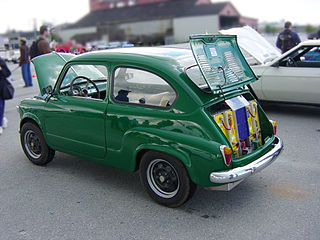
In automobile engineering, electric vehicle conversion is the replacement of a car's combustion engine and connected components with an electric motor and batteries, to create an all-electric vehicle (EV).
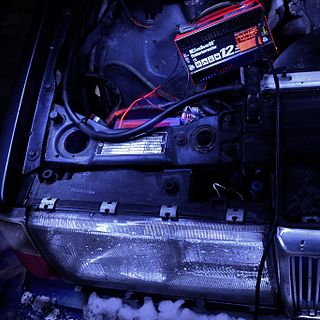
A battery charger, or recharger, is a device that stores energy in a battery by running an electric current through it. The charging protocol depends on the size and type of the battery being charged. Some battery types have high tolerance for overcharging and can be recharged by connection to a constant voltage source or a constant current source, depending on battery type. Simple chargers of this type must be manually disconnected at the end of the charge cycle. Other battery types use a timer to cut off when charging should be complete. Other battery types cannot withstand over-charging, becoming damaged, over heating or even exploding. The charger may have temperature or voltage sensing circuits and a microprocessor controller to safely adjust the charging current and voltage, determine the state of charge, and cut off at the end of charge.
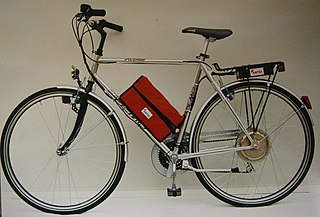
An electric bicycle is a motorized bicycle with an integrated electric motor used to assist propulsion. Many kinds of e-bikes are available worldwide, but they generally fall into two broad categories: bikes that assist the rider's pedal-power and bikes that add a throttle, integrating moped-style functionality. Both retain the ability to be pedaled by the rider and are therefore not electric motorcycles.

A mobility scooter is an electric vehicle and mobility aid equivalent or auxiliary to a power wheelchair but configured like a motorscooter. When motorized they are commonly referred to as a power-operated vehicle/scooter, handicap scooters, or electric scooter as well. Non-motorized mobility scooters are less common, but are intended for the estimated 60% of wheelchair users who have at least some use of their legs.

A motorized scooter is a stand-up scooter powered by a small utility internal combustion engine or, in case of e-scooter, by a small electric motor directly built in the front or the rear wheel. Classified as a form of micro-mobility, these scooters are generally designed with a large deck in the center on which the rider stands. The first motorized scooter was manufactured by Autoped beginning in 1915.

Vectrix was an electric vehicle company based in Middletown, Rhode Island, United States, with research and development facilities in New Bedford, Massachusetts and an assembly plant in Wrocław, Poland. Vectrix ceased all US operations as of December 31, 2013. The company filed for bankruptcy and final liquidation in March 2014.
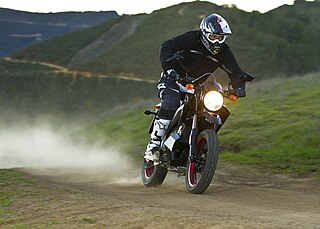
Electric motorcycles and scooters are plug-in electric vehicles with two or three wheels. The electricity is stored on board in a rechargeable battery, which drives one or more electric motors. Electric scooters have a step-through frame.

ZAP was an American electric vehicle company that designed, produced and marketed vehicles including automobiles, motorcycles, bicycles, scooters, personal watercraft, hovercraft, ATVs, neighborhood electric vehicles and commercial vehicles. The name stands for Zero Air Pollution. The company headquarters were located in Santa Rosa, California. The company is presumed to be defunct. The company's last filing with the California Secretary of State business entity database indicates the agent for service of process resigned on October 26, 2016.

A battery electric vehicle (BEV), pure electric vehicle, only-electric vehicle, fully electric vehicle or all-electric vehicle is a type of electric vehicle (EV) that exclusively uses chemical energy stored in rechargeable battery packs, with no secondary source of propulsion. BEVs use electric motors and motor controllers instead of internal combustion engines (ICEs) for propulsion. They derive all power from battery packs and thus have no internal combustion engine, fuel cell, or fuel tank. BEVs include – but are not limited to – motorcycles, bicycles, scooters, skateboards, railcars, watercraft, forklifts, buses, trucks, and cars.

An electric battery is a source of electric power consisting of one or more electrochemical cells with external connections for powering electrical devices.

A motorized wheelchair, powerchair, electric wheelchair or electric-powered wheelchair (EPW) is a wheelchair that is propelled by means of an electric motor rather than manual power. Motorized wheelchairs are useful for those unable to propel a manual wheelchair or who may need to use a wheelchair for distances or over terrain which would be fatiguing in a manual wheelchair. They may also be used not just by people with 'traditional' mobility impairments, but also by people with cardiovascular and fatigue-based conditions.
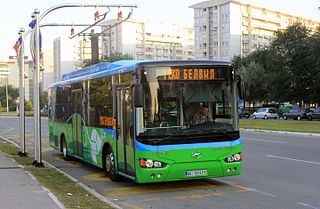
A capacitor electric vehicle is a vehicle that uses supercapacitors to store electricity.

A personal transporter is any of a class of compact, mostly recent, motorised micromobility vehicle for transporting an individual at speeds that do not normally exceed 25 km/h (16 mph). They include electric skateboards, kick scooters, self-balancing unicycles and Segways, as well as gasoline-fueled motorised scooters or skateboards, typically using two-stroke engines of less than 49 cc (3.0 cu in) displacement. Many newer versions use recent advances in vehicle battery and motor-control technologies. They are growing in popularity, and legislators are in the process of determining how these devices should be classified, regulated and accommodated during a period of rapid innovation.

Micromobility refers to a range of small, lightweight vehicles operating at speeds typically below 25 km/h (15 mph) and driven by users personally. Micromobility devices include bicycles, e-bikes, electric scooters, electric skateboards, shared bicycle fleets, and electric pedal assisted (pedelec) bicycles.



















